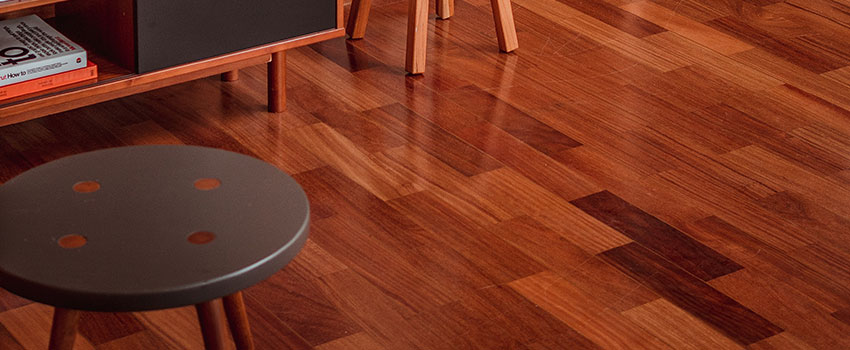Imagine stepping onto your warm wooden floor on a chilly winter morning, the cozy warmth radiating up from beneath your feet. This dream can become reality with underfloor heating, but choosing the right engineered wood flooring thickness is crucial to ensure optimal comfort and system efficiency. The perfect thickness impacts heat transfer, structural integrity, and the overall lifespan of your flooring.

Image: www.uheat.co.uk
Choosing the best engineered wood flooring thickness for underfloor heating involves careful consideration of various factors, including the type of underfloor heating system, the desired level of warmth, and the overall aesthetics of your space. This guide delves into the intricate relationship between flooring thickness and underfloor heating systems, providing valuable insights to help you make informed decisions.
Understanding Engineered Wood Flooring
Engineered wood flooring offers many advantages over traditional solid wood, including increased stability and resistance to warping, making it a popular choice for modern homes. It consists of a thin layer of hardwood veneer bonded to a core made of plywood or other engineered wood. The core layer adds strength and durability, while the top veneer provides the beautiful wood grain and finish. The thickness of engineered wood flooring typically ranges from 3mm to 15mm, with the veneer thickness being a crucial aspect to consider when pairing it with underfloor heating.
Why Thickness Matters for Underfloor Heating
Underfloor heating systems generate warmth by circulating hot water or electric cables beneath the flooring. The heat then travels upward through the flooring material, warming the surrounding air and the floor itself. The thickness of your engineered wood flooring plays a significant role in how effectively this heat is transferred.
Heat Transfer & Response Time
Thinner engineered wood flooring allows for quicker heat transfer, meaning the floor surface warms up faster when the underfloor heating system is activated. This is particularly advantageous when you need rapid heating, such as for a quick morning warm-up or a spontaneous dinner party.

Image: renovation-london.co.uk
Heat Distribution
The thickness of the flooring can influence heat distribution across the floor surface. Generally, thinner flooring provides better heat distribution, ensuring a more consistent and comfortable temperature throughout the room. Thicker flooring may experience slight variations in temperature, especially in areas near walls or furniture.
Energy Efficiency
When considering energy efficiency, thinner engineered wood flooring can be a more cost-effective option. A thinner layer of wood requires less energy to heat and maintain a comfortable temperature. However, it’s crucial to remember a balance should be found between energy efficiency and maintaining adequate structural integrity. For heavier furniture or high traffic areas, a slightly thicker layer of wood may be necessary.
Optimal Thickness for Different Heating Systems
The best thickness for engineered wood flooring underfloor heating depends heavily on the specific underfloor heating system chosen. Here’s a breakdown of recommended thicknesses for different systems:
Electric Underfloor Heating
Electric underfloor heating systems typically generate higher heat output compared to water-based systems. This allows for a wider range of thickness choices. For electric systems, a thickness of 6mm to 10mm is generally recommended for optimal performance.
Water-Based Underfloor Heating
Water-based underfloor heating systems distribute heat more gradually compared to electric systems. This requires a more careful consideration of flooring thickness. For water-based systems, a thickness of 5mm to 8mm is often ideal for achieving the best balance of heat transfer, energy efficiency, and structural integrity.
Factors Affecting Thickness Choice
Beyond the type of underfloor heating, several other factors can influence your decision about the optimal engineered wood flooring thickness:
Subfloor Condition
The condition of your subfloor plays a crucial role. If your subfloor is uneven or has significant imperfections, choosing a slightly thicker engineered wood flooring can help compensate for these irregularities and achieve a smooth, even finish. A thicker layer can provide extra cushioning underfoot and minimize creaking sounds.
Traffic Levels
Heavy foot traffic or the presence of heavy furniture can lead to uneven wear. In these cases, opting for a slightly thicker engineered wood flooring with a higher wear layer thickness is recommended. This provides greater durability and protects the surface from scratches and dents.
Aesthetic Preferences
The appearance of the flooring should not be overlooked. Thinner engineered wood flooring typically has a more subtle, understated aesthetic, while thicker flooring can create a more substantial presence in the room. Ultimately, the choice comes down to your personal preference and the style of your home decor.
The Importance of Consultation
Choosing the optimal engineered wood flooring thickness for underfloor heating involves a careful assessment of various factors. It’s always wise to consult with a flooring professional who can provide personalized recommendations based on your specific needs and preferences. A qualified installer can offer valuable advice on flooring thickness, underfloor heating system compatibility, and the best installation practices.
Best Thickness For Engineered Wood Flooring For Underfloor Heating
Conclusion
Choosing the right engineered wood flooring thickness for underfloor heating is essential for achieving optimal comfort and energy efficiency. Consider the type of heating system, the desired heat output, and the specific requirements of your space. With the insights provided in this guide, you can make informed decisions to ensure your flooring enhances the warmth and beauty of your home.





